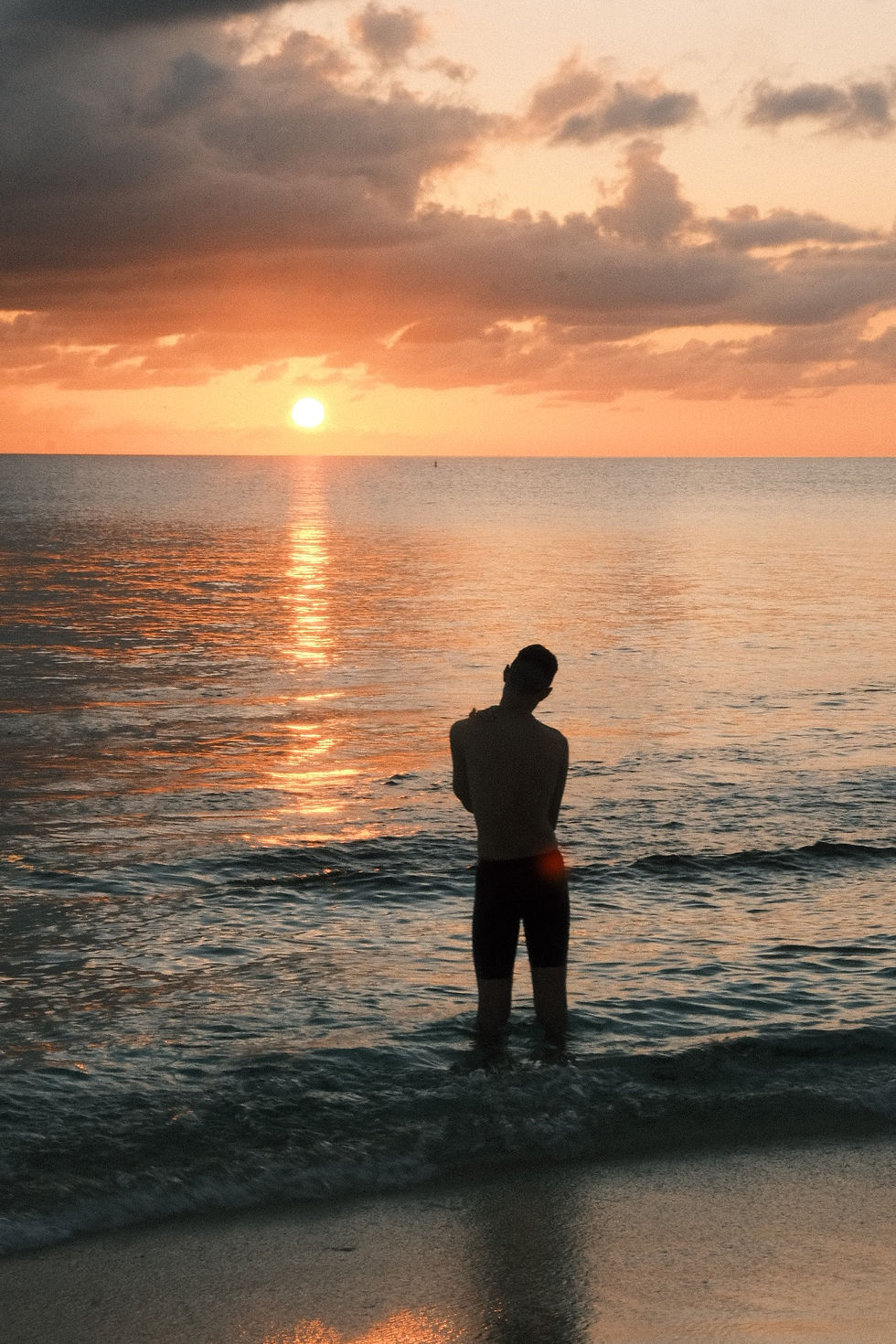Activ Life Postcard [wellness tip #10]
- Louise FitzRoy, Principal, Activ Life

- Sep 12
- 3 min read
Dear Activ Life enthusiast
It flickers, dances, and moves, but remains steady in its essence. Presence as a flame.
We often equate presence with stillness, but being present can also mean being deeply immersed, engaged, and embodied in motion.
This week’s stunning Activ Life Postcard captures a young boy playing with his boogie board in the waves. His joy and presence was remarkable; he didn’t pay attention to anything else besides the water and what he was doing in this moment. A true Zen moment even though he was active.

For example, presence in movement can include:
Flow states: Activities like dancing, climbing, running, or playing music pull you so fully into the moment that there’s no mental space left for distraction. Presence comes through total bodily engagement.
Micro-awareness: Walking while noticing the sensation of your feet hitting the ground, the rhythm of your breath, or the sounds around you is presence-in-motion.
Sports and performance: Athletes and performers often describe being “in the zone,” where time dilates and awareness sharpens, not because they are still, but because they are completely attuned.
Dynamic forms of mindfulness include tai chi, yoga flows, or martial arts that blend movement and awareness — every transition is as important as the pose itself.
Also, mindful chores such as washing dishes, cooking, or folding laundry can be opportunities for presence, if done with full sensory attention.
When travelling attentively, presence can be found on a train ride or a bike commute — noticing landscapes shifting, wind against skin, or the rhythm of passing lights.
Examples of relational presence include:
Conversation as presence: Listening deeply while speaking and responding requires active participation, not passive stillness.
Parenting or caregiving: Being present with someone else’s needs often means movement, action, and responsiveness — not calm detachment.
Playfulness: Children model presence well — they are fully there while running, building, or exploring.
Creative presence includes the following:
Art-making, writing, crafting, improvisation: These are forms of presence where your attention rests fully in the act of creating. The movement of pen, brush, or hands becomes the anchor.
Musical presence: Playing an instrument or singing involves body, breath, and timing — presence emerges in rhythm and vibration, not silence.
Presence doesn’t mean immobility; it means immersion. You can be perfectly still but mentally elsewhere. You can be moving fast but fully aware of each step, each sound, each breath.
Here’s a guided reflection you can try:
Arriving: Take a slow breath in. Let it out. Notice where you are, without trying to change anything. Let your body relax, even as you prepare to move.
Gentle Movement: Begin by shifting your body slightly. Roll your shoulders, sway side to side, or take a few steps. As you move, notice: what muscles are working? How does your weight shift? Where is your breath? Presence is not about freezing; it’s about noticing.
Walking Awareness: If you like, stand and walk slowly. Feel the rise and fall of your feet. Notice the rhythm: heel, arch, toe. Notice the air against your skin, the sounds around you.
Expanding the Circle: Try a larger movement — stretch your arms wide, reach up, or even spin slowly. Instead of focusing on perfection, focus on sensation: How does it feel to stretch? Where do you notice tension, release, or flow?
Engaging the World: Think of presence in conversation, in work, in play. Can you feel the same attentiveness while speaking, cooking, or moving through a busy street? Imagine carrying this awareness forward: not as silence, but as aliveness.
Closing: Pause wherever you are. Take one deep breath in, and one slow breath out. Notice: you have just been present — not by being still, but by moving with awareness.
Ask yourself this - What would make the next minute kinder for my body?
Perhaps soften the shoulders, unclench your jaw, slow your exhales, take smaller steps, or stand up if you’ve been sitting at your desk for a long time.
Practise these concepts and discover many more healthy, sustainable lifestyle habits in our comprehensive Work Wellness program; 20-minute online sessions that can be accessed at your desk every day of the working week.
Click the button below to read our Work Wellness Program Overview. Email louise@theactivlife.com for more information and questions about getting started.
Your favourite travelling yogis

![Activ Life Postcard [wellness tip #9]](https://static.wixstatic.com/media/4d5b84_8c0c8b09c9a64a8aaf85bfd7d40a4502~mv2.jpg/v1/fill/w_980,h_653,al_c,q_85,usm_0.66_1.00_0.01,enc_avif,quality_auto/4d5b84_8c0c8b09c9a64a8aaf85bfd7d40a4502~mv2.jpg)
![Activ Life Postcard [wellness tip #8]](https://static.wixstatic.com/media/4d5b84_dbc41d88c8804c4ebc3526dab3b694a2~mv2.jpg/v1/fill/w_980,h_653,al_c,q_85,usm_0.66_1.00_0.01,enc_avif,quality_auto/4d5b84_dbc41d88c8804c4ebc3526dab3b694a2~mv2.jpg)

Comments